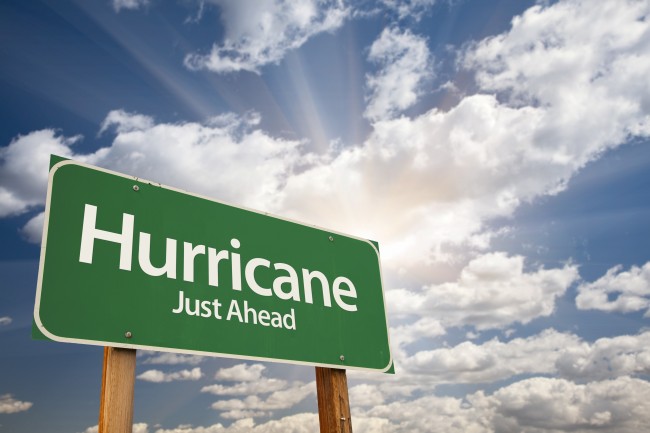
Hurricanes are probably the scariest natural disaster you can go through. Even if you ask people who live where there are earthquakes, many will tell you that hurricanes are worse. Earthquakes strike and then they leave. Hurricanes let you know they’re coming and then they stay around for as long as they like, causing a lot of destruction.
Knowledge is your best defense against hurricanes. If you know what to look for, what to listen for, and what to do, you can help keep yourself safe in the event of a hurricane. Let’s start by getting a few facts straight.
On This Page:
- 9 Hurricane Facts for Kids
- Hurricane Katrina Facts
- Hurricane Safety for Kids
- Hurricane Projects & Experiments for Kids
9 Hurricane Facts for Kids
1. Did you know that hurricanes have seasons? In the Eastern Pacific (California, Baja California, Mexico) it begins on May 15th. In the Atlantic it begins on June 1st. In both areas, the season ends on November 30th. Of course, this doesn’t mean that they won’t happen the rest of the year. All it means is that these are the dates that mark when hurricanes are the most likely to occur.
2. All hurricanes begin as “tropical storms”. Tropical storms are whirling storms with wind speeds of at least 39 mph. When the wind in a tropical storm gets to 74 mph it becomes a hurricane.
3. To determine the official wind speed, scientists measure to see what speed is kept up for at least a minute. When a speed is kept up for at least a minute, it is called “sustained wind speed”.
4. Hurricanes get names that are chosen from six different lists. Each year they change which list they use so that the names don’t get confused. When a hurricane is particularly bad, the World Meteorological Organization can vote to retire the name and then vote on another one to replace it. For example, there will never be another hurricane named Katrina or Sandy.
5. Hurricanes never form on the equator. The Coriolis Force, the force that moves things left or right due to the planet’s rotation, is too weak at the equator. This prevents the spin from forming that would help create a hurricane. They have to be 5 to 15 degrees away from the equator.
6. In the Northern Hemisphere the effect of the Coriolis Force, known as the Coriolis Effect, makes hurricanes spin counter-clockwise. In the Southern Hemisphere they spin clockwise. Because hurricanes spin in opposite directions across the equator, no hurricane has ever been known to go from one hemisphere to the other.
7. When a hurricane strikes, much of the damage is not caused by the high winds, although they can be very destructive. Most of the damage is usually caused by flooding that happens due to storm surges. During Hurricane Katrina, the storm surge caused the levees to break which led to widespread flooding. As the levees broke, the rivers and streams swelled and allowed the flooding to go several miles inland.
8. Hurricanes used to be identified by their location and the year they occurred, such as “the Great Hurricane of 1722”, or “the Galveston Storm of 1900”. This led to some confusion when two or more storms hit the same area at the same time. When the US military needed to track storms, they used the Greek alphabet and then characters from Greek myths. When these were exhausted they started naming storms after wives and girlfriends. This started the tradition of hurricanes having women’s names. In 1979, they started alternating male and female names.
9. Hurricanes form when air comes together over warm water (about 80 degrees F). The warm air rises, cooling as it goes. As it cools it falls, heading downward in a spiral . As more warm air flows in and rises, the spiral gets faster and stronger. As long as it can pick up warm air and drop it in a spiral pattern, a hurricane has a chance of forming.
Consult With a Hurricane Recovery Pro TodayHurricane Katrina Facts
If you live where hurricanes happen, it is important that you learn as much as you can about them. By learning about them, you can know what to expect and what to do. The more you can do for yourself during a hurricane, the more your parents will be able to do for your whole family.
Here are some other facts about Katrina:
- Hurricane Katrina was the most expensive disaster in US history at $108 billion dollars, and that doesn’t include what insurance companies had to pay out and what it cost to rebuild roads, schools, and hospitals.
- During the 2005 hurricane season, 6 other hurricanes struck, but none were as costly as Katrina.
- Hurricane Katrina was a Category 5 hurricane at its strongest when it was out at sea. This means it had sustained wind speeds over 156 mph. When it came ashore, however, it was a Category 3.
- The worst damage was not caused by the winds of the hurricane. It was caused by the flooding, when the levees broke. Levees are barriers set up to hold back sea water during storm surges. In New Orleans the levees failed due to inadequate design and construction.
Hurricane Safety for Kids
The single most important thing for you to do in a hurricane is to stay safe! Staying safe means knowing what to do before, during, and after a hurricane. Here are some things for you to keep in mind. Write them down and study them so that if a hurricane happens you aren’t left wondering where to go or what to do.
Before
Hurricanes usually give quite a bit of warning before striking, so there are steps you can take to help keep yourself, your family, and your pets safe.
- Have a disaster plan. This means knowing where you are to go whether it’s to a safe room if you’re home or a known meeting place if you’re away.
- Have a plan for your pets. Have your parents talk to your vet about how to help keep your pets safe during a hurricane.
- Make a disaster kit. This kit should be an easily grabbed and carried backpack and should have some first aid supplies, a change of clothes, a radio, a flashlight, three days worth of food and water, and any special instructions in writing. You should also include your home address and a local map. Also include any medicines you are taking.
- Have a weather radio handy and plenty of batteries to keep it running. Normal radio stations may not make announcements as fast as a dedicated weather radio would.
- Bring in anything from outside that can blow away. Flying objects cause a lot of injury and damage.
- Board up windows. If you’re too young to help board up windows, go through the house and make sure all doors and windows are closed. This can help your house survive the winds.
During
During a hurricane there isn’t much you can do. You can’t stop the hurricane, all you can do is be smart and stay safe.
- Stay away from low-lying areas and places that may flood. If there are canals, rivers, or streams where you live, stay away from them. Storm surges can cause the water to suddenly rise up and jump the banks. If you’re too close, you could be swept away by the flood.
- Stay indoors. Strong winds can blow dangerous objects around with amazing speeds. While it may be cool to watch on TV, you don’t want to risk getting hit by one!
- Even if your windows are all boarded up, stay away from them. Large objects can hit the boards and send sharp splinters inward.
- If you live in a mobile home, get to a shelter. Mobile homes do not handle hurricanes very well no matter how well they’re made.
- If your home isn’t on higher ground, you may have to leave it in case the hurricane causes a flood.
- If you are told to evacuate, evacuate right away!
After
After a hurricane has passed you may feel it’s safe to come out and see how your house and neighborhood fared. If you had to evacuate, you might want to come back home. Before you take any action, read these tips:
- Stay indoors until you are told it’s safe to come out. As badly as you might want to check on things, it’s better to stay put for a little while longer until the danger of the storm has definitely passed.
- It’s okay to check for injured or trapped people, but only if you aren’t putting yourself in danger.
- Be aware of any possible flooding that can happen after a hurricane. Just because it hasn’t hit you yet doesn’t mean that it won’t.
- Never attempt to cross a flooded area. Even if the water looks calm on the surface, the water below can be flowing very strongly and pushing heavy debris with it that can knock you down and carry you away. Even if you’re in a car, it’s not safe to cross.
- Stay away from power lines, especially those that are blown down. Avoid standing water as well, because downed power lines could be hidden in it. If you see a downed power line, leave the area immediately and let an adult know where it is. They can direct emergency workers to it.
- Don’t drink tap water until you’re told it’s safe. Hurricanes can disrupt more than buildings and trees; they can destroy streets and break sewer pipes, causing the sewage to get into the city’s drinking water supply.
Hurricane Projects & Experiments for Kids
Build Your Own Hurricane! (Grades 2 to 5)
You can build your own hurricane right in your own kitchen! All you need is:
- 2 2-liter bottles, empty
- Duct tape or some way to seal them together at the openings
- Water
- Lamp oil, colored
- Glitter (optional)
Instructions:
- Fill one bottle with water and a small layer of lamp oil. Add the glitter if you’re using it.
- Tape the other bottle to the first bottle so that their openings are sealed together. Try to make it as water tight as possible!
- Tip the bottles over so that the filled one is on top and the empty one is on the bottom.
- Watch your hurricane!
As the water flows from the upper bottle to the lower bottle, the colored oil shows the spiraling current more clearly. If you used glitter, you can see how debris gets thrown around.
The Eye of the Storm (Grades 4-5)
Winds in the eye of a hurricane are amazingly calm. To demonstrate this you will need but a few minutes and:
- A 2 liter bowl with water in it
- A spoon or other stirring device
- Black pepper
- A ruler or stick long enough to cross the bowl
- String
- A paper clip
Instructions:
- Fill the bowl with water and pepper.
- Tie the paper clip to the stick with the string. Be sure to leave enough length so that the paper clip can be suspended in the bowl.
- Stir the water and make it swirl.
- Lower the paperclip into the water.
The pepper lets you see how strong the currents are to the outer edges of the spiral. The paper clip, however, should be relatively undisturbed as it hangs in the eye of this “hurricane”.
Wind and Waves (Grades 6-8)
High winds can make for high waves. With this experiment, you can measure how wind strength affects waves within a few minutes. You need:
- A 9×13 baking dish filled part way with water
- A flexible straw
- A ruler
- A notebook and pencil
Instructions:
- Bend the straw and hold it so that the long end is just above the water at one end of the baking dish.
- Blow into the straw.
- Measure the height of the waves at the far end of the dish.
As you blow into the straw, waves will form from the wind of your breath. Record the height of the straw above the water and the height of the waves. Compare the results when you put the straw at different heights.
Make A Storm Surge (High School)
To see how devastating a storm surge can be, you get to use your artistic abilities. This one may take an hour or so to build the river, beach, and town. You will need:
- A long, trough-like container
- Sand
- Water
- A wood block
- A hair dryer
- Small models to build a town (optional)
Instructions:
- Fill the trough with sand.
- Carve a river bed in the sand, dampening the sand if you must to make it more pliable. Include a few smaller streams like a real river would have, and leave a good sized area at one end to serve as an ocean.
- Create a barrier island near the mouth of your river.
- Fill your ocean with water. Make sure you pour in enough water to surround the island and fill the river, but don’t flood your town (if you used models).
- Once it’s all settled, use the hair dryer to simulate high winds and blow the water from the ocean into the river. Use the wooden block by putting it into the ocean to simulate the surge.
The wind and resulting surge should inundate your river and town. While the winds from the hair dryer should do relatively little damage, you can see how far and how fast water can move when it’s helped along by a hurricane!
Return to Top
Consult With a Hurricane Recovery Pro Today
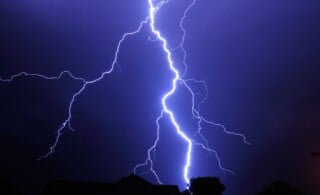 Guide to Severe Thunderstorms
Guide to Severe Thunderstorms 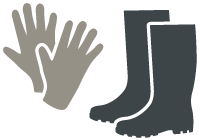 5 Post-Tornado Safety Tips That Could Save Your Life
5 Post-Tornado Safety Tips That Could Save Your Life  Tornado Safety Guide
Tornado Safety Guide 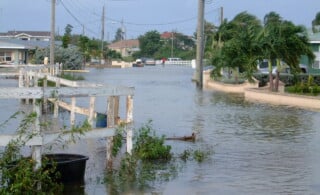 5 Critical Post-Hurricane Safety Precautions
5 Critical Post-Hurricane Safety Precautions 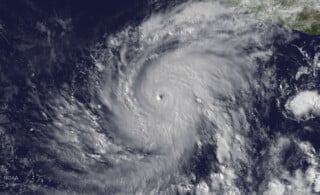 Hurricane Safety Tips
Hurricane Safety Tips 

Are You Familiar With This Topic? Share Your Experience.